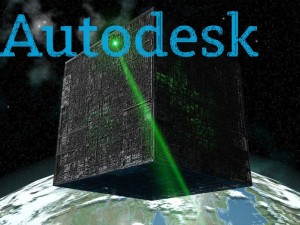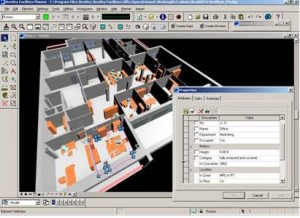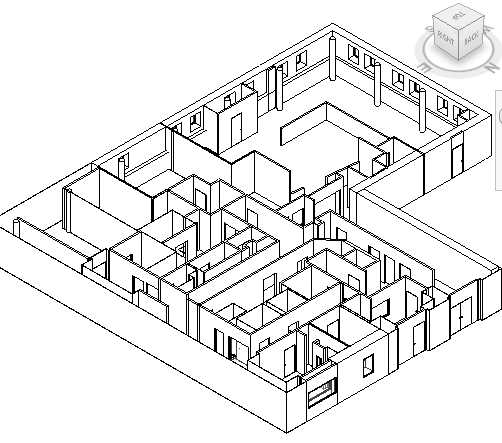Posts Tagged BIM
BIM….It’s like Legos
Posted by Jim Foster in BIM on January 12, 2012
 In an article in the Boston Herald Robert Murray, the President of Bond Construction stated that BIM sped up construction by 10%, or in the case of a current project at Boston University, 2.5 Months. The new building 122,000 square feet in all will be mixed use with restaurants, offices, and classrooms and comes with a price tag of $48 million. While the article mostly emphasizes the increased speed that buildings can go up, especially important in the academic community to get a building on-line for a new year, how about the cost savings? You have a full crew off the building 2.5 months early?
In an article in the Boston Herald Robert Murray, the President of Bond Construction stated that BIM sped up construction by 10%, or in the case of a current project at Boston University, 2.5 Months. The new building 122,000 square feet in all will be mixed use with restaurants, offices, and classrooms and comes with a price tag of $48 million. While the article mostly emphasizes the increased speed that buildings can go up, especially important in the academic community to get a building on-line for a new year, how about the cost savings? You have a full crew off the building 2.5 months early?
“In the future, we’ll build the whole building in sections, not just the systems,” he said. “That’ll be the standard, almost like Legos.” – Robert Murray – President Bond Brothers
The project manager mentioned that they analyze every piece of equipment that comes into the building to make sure it has a clear path. A giant room size air conditioning unit was checked digitally to see that it could fit.
“At the project office next door to the site on Commonwealth Avenue, Bond superintendent George Antonucci sat at a desk with five computer monitors running software such as Revit, NavisWorks and AutoCad that chelp model the building’s components. An iPad running an app called Vela Mobile lets workers take the 3D model onsite. All of that technology makes it possible for workers to map every duct, pipe and wire in detail beforehand, instead of fitting them as they build. “
“It’s a hell of a lot faster …..,” Antonucci said.
Current Technologies for Reality Capture : #Revit #BIM #AU2011
Posted by Jim Foster in BIM, Built Environment, New Technologies on December 14, 2011
 I was at the recent Autodesk University in Las Vegas and sat in the session for Reality Capture for Rapid Energy Modeling by Jess Miller who discussed the current technologies and work flows to document existing buildings digitally in Revit. As it stands the 4 available today are:
I was at the recent Autodesk University in Las Vegas and sat in the session for Reality Capture for Rapid Energy Modeling by Jess Miller who discussed the current technologies and work flows to document existing buildings digitally in Revit. As it stands the 4 available today are:
- Satellite Imagery
- Laser Scanning
- 123D Catch (aka Photofly)
- PKNail Pro
All of these technologies with the exception of PKNail, yes I do have a horse in this race, require a user to extract geometry from one program and draft in another. PKNail allows a user to survey and model directly in Revit. However, the most important task is choosing the right tool for the job and usually this is driven by the scope of the project/deliverable, what the model is going to be used for, and conditions and access of the building. First, let’s look briefly at the current technologies and how they work.
Satellite Imagery
this requires getting oblique images from a source such as bing maps or Pictometry, that then can then be scaled and traced over in Revit. While it could be the least expensive of the methods it is generally a lot less accurate, requires something that allows you to scale the photos properly either on site measurements, existing plot plan, or CAD floor plan and any real details will not be included. This might prove to be an okay method to extract geometry for energy modeling but the model would end there, you could not use it to move forward with an architectural model. Additionally, it requires a sophisticated users knowledge of Revit through linking photos and extracting geometry.
Laser Scanning.
This is generally done as a service, that is you hire a company who has a laser scanner to create a pointcloud of the building you need. Estimates range from $3-$5K per day to have someone scanning a building. I know from experience that I have been quoted almost $60,000 to scan the exterior and interior of a single story industrial building and that did not include the Revit model we needed. We would have to build that ourselves from the point cloud. However, if you need an accurate 3D data set of an existing structure it is an excellent resource. You will need to import the pointcloud into Revit and trace over it to create the geometry making it at least a 2 step process. There are some technologies available such as Imaganit from Rand Technologies that will allow a user to extract some geometry to Revit but it is still a manual process. I have seen excellent use of this technology is extensive exposed MEP projects, think boiler room or oil rig, or difficult and inaccessible geometry, such as the Capitol Dome.
123D Catch,
is a program that allows you take pictures of building, send them up into the cloud and have them stitched together and served back to you as a 3D Photo model that you can then scale and extract geometry from. I have not had success using this product. I want to be successful using this product because I think it would be awesome but the few times I have sent something up to the could I get back something that looks like I am looking through a kaleidoscope. I highly recommend you take a look because as the technology progresses and computers get more powerful this will only get better.
PKNail Pro for Revit,
this is an add in to Revit that allows you to create real Revit objects, driven wirelessly from laser range finder (Disto D8) and from measurements in the field. That is measure wall, press a button and the wall is created directly in Revit. This is the only software that works within the actual BIM software so there is no need to translate or extract geometry. PKNail Pro automates current workflows and data capture and allows a user to finish the model on site. It excels at creating dimensionally correct 3D models of the both the interior and exterior. However, if you need a lot of exterior detail you may want to pair it with another of the technologies to create gutter sweeps, cornice work, etc. if that is needed on the project. PKNail also recognizes any Revit wall so you could another technology/method to create the exterior and use PKNail Pro to capture all the interior fit outs.
What it boils down to is what is needed based on the scope of the project and your budget. Choose the right tool for the job and don’t limit yourself, because who wants to use a hammer when you need a screw driver, or use a jackhammer when you need to hang a picture. I’ll work on my metaphors, you work on capturing reality.
BIM Gets Wet : MWH uses Autodesk Suite of Products for Third Set of Panama Locks
Posted by Jim Foster in BIM, Revit on November 15, 2011
 I can’t write it better than the PR folks at Autodesk so excerpts from the Autodesk Press Release copied below.
I can’t write it better than the PR folks at Autodesk so excerpts from the Autodesk Press Release copied below.
November 08, 2011 at 8:58 AM
SAN RAFAEL, Calif., Nov. 8, 2011 — Autodesk, Inc. (NASDAQ: ADSK), a leader in 3D design, engineering and entertainment software, announced that MWH Global, a leader in wet infrastructure projects and programs, including water, hydropower and civil infrastructure, has been selected to receive an Autodesk BIM Experience Award. The firm is being honored for using a Building Information Modeling (BIM) process, together with Autodesk BIM software, to help design the Third Set of Locks project for the Panama Canal, intended to double the canal’s shipping traffic capacity.
To help meet the challenges of the project, MWH Global used a BIM process and Autodesk BIM solutions to address the following tasks:
- Autodesk 3ds Max Design software is being used for conceptual and detailed design and was used to produce design visualizations to help the client understand several design options.
- Autodesk Revit Architecture, Autodesk Revit Structure and Autodesk Revit MEPsoftware is being used for detailed design of the canal’s new lock structures, buildings, control towers and a multitude of supporting facilities
- AutoCAD Civil 3D software is helping create more efficient and accurate site designs.
- Autodesk Navisworks Manage software is being used for improved multidiscipline coordination and collaboration, helping resolve design conflicts prior to construction, increasing the quality of the project and helping to prevent costly field changes.
- AutoCAD Electrical software is being used by the electrical subcontractor to MWH Global for the electrical schematics and panel layouts.
- For project handover to the Panama Canal Authority, the team is capitalizing on its use of a BIM workflow to capture asset information such as equipment identification tags for inclusion in an operations manual incorporating project models and data.
Korean BIM, no, not food…BIM : GS Engineering and DPR Construction sign accord.
Posted by Jim Foster in Adoption, BIM on November 4, 2011
 As reported in the Korea Times GS Engineering & Construction has teamed up with DPR Construction. DPR, a top 50 Contractor, has fully incorporated BIM, IPD (Integrated Project Delivery) and VDC (Virutal Design and Construction) into their methodology. They both worked on the NC Soft Building in Pangyo, Gyeonggi Province.
As reported in the Korea Times GS Engineering & Construction has teamed up with DPR Construction. DPR, a top 50 Contractor, has fully incorporated BIM, IPD (Integrated Project Delivery) and VDC (Virutal Design and Construction) into their methodology. They both worked on the NC Soft Building in Pangyo, Gyeonggi Province.
“Though Korean builders are doing very good overseas, the level of construction technology and labor productivity still remains lower than those of other advanced nations,” a GS spokesman said. “By adding the high-tech IT technology to construction projects, we’ll try to become one of the top-tier builders in the world.” He said both companies have already used the BIM process in building an R&D center of NCsoft, a top online video game company in Korea, in Pangyo, Gyeonggi Province, and they will further expand bilateral BIM collaboration in the years to come.
Also reported in the article and unknown to me at the time is that BIM is required on all goverment projects over 50 billion Won, which at today’s rates would be USD $4,502,700….tasty
Gehry Does Revit : Pigs Fly Addition : BIM
Posted by Jim Foster in Adoption, BIM on October 26, 2011
So off business wire the other day I read that Gehry Technologies has teamed up with Autodesk to offer ” to transform business and design workflows with Autodesk BIM solutions.” Now there Digital Project built on DSS’s Catia Engine is a competitor to Revit, No? However, Gehry Technologies sells technology, services and consulting to firms wanting to implement BIM. And now they are offering Revit as a platform. That’ some feather in the cap for Autodesk. “This new business relationship with Autodesk is a key element of our growth strategy,” added Dayne Myers, CEO of Gehry Technologies. And there you have it, Revit equals growth, Revit equals the future. I am not saying that some BIM 2.0 Platform might come along and knock everyone off their feet, but for now Revit’s got the lead and its pulling away.
PRESS RELEASE
Oct. 19, 2011, 9:30 a.m. EDT
Autodesk and Gehry Technologies to Work Together to Improve the Way Buildings are Designed and Constructed
Autodesk digging into the Built Environment : Augments ‘Reality Capture’ Stable by acquiring Alice Labs
Posted by Jim Foster in 3D, BIM, Built Environment, New Technologies on October 18, 2011
 80/20, the amount of construction projects that happen in the built environment vs. new construction, at least here in Boston and this is usually the case across the globe, maybe not 80/20 but having the majority of construction happening in the built environment. So if you’re Autodesk and you have all this great software, you can no longer presuppose the data, you are going to have to capture it somehow.
80/20, the amount of construction projects that happen in the built environment vs. new construction, at least here in Boston and this is usually the case across the globe, maybe not 80/20 but having the majority of construction happening in the built environment. So if you’re Autodesk and you have all this great software, you can no longer presuppose the data, you are going to have to capture it somehow.
Autodesk put another arrow in their ‘built environment’, ‘as built’ or soon to be trademarked “reality capture’ quiver by acquiring Alice Labs. As reported in Graphic Speak, Autodesk Scoops up 3D point cloud innovator Alice Labs. And if you go to the Alice Labs website, all you get is a splash page saying they have been acquired by Autodesk, and no press releases from Autodesk either. Why not? Autodesk is like the borg, well I can’t comment on the assimilation part, but as far as sucking up cultures within their universe, no problem. So why not let people know.
The small team, closely related to ongoing research at technical universities in Delft, Netherlands and Ghent, Belgium, has previously released Studio Clouds, an innovative 3D laser point cloud editing technology that offers plug-ins for Autodesk’s 3ds Max and Maya modelers, and uses a proprietary game engine for fast manipulation of point cloud data…Behind the application is the Mirage Nova Engine (MNE), said to be capable of handling billions of points with ray-trace visualization quality. NME also offers a photogrammetric tool, offering an affordable way to generating high fidelity point cloud models from photographs. MNE is designed for 64-bit multi-core architectures and can take advantage of graphic card acceleration for maximum speed. -Randall – Graphic Speak
Either way, Autodesk is interested in getting you working in their software whether it’s for new construction or the the built environment, designing retrofits or modeling New York for gameplay. If it’s a 3D environment they want to put you in it, and Autodesk wants to be the transporter…Kirk Out <end cheesy Star Trek word play>
The renovation market is now breaking loose…BIM
Posted by Jim Foster in BIM, Built Environment on October 13, 2011

In a recent article in the ENR (Engineering News Record) ENR’s Top 600 Contractors Awaiting a Recovery, the news is mostly bad. Revenue is down 8.7% for the Top 600 from 2009 and they do not expect a recovery anytime soon, for new buildings. One of the bright spots, “the renovation market.”
“Our maintenance and retrofit market is up 40% in the past year,” says Limbach’s CEO Bacon. After three years of bottled-up demand, he says, the renovation market is now breaking loose.
Being Tech Savvy is a plus as well in cutting the waste out of construction and trying to maintain already thin margins. “If you are not fully proficient in [BIM], you are way behind,” says Dean. He says the first phase was to show that BIM actually worked in the construction process. The industry is now in a second phase, in which practical improvements are being implemented on a regular basis. “It’s not just a clash-detection tool anymore,” says Bill Dean, CEO of M.C. Dean.
BIM FM Rundown
Posted by Jim Foster in BIM, Built Environment, New Technologies on October 7, 2011
 BIM, supposedly, sits at the center of managing a building from design to demolition. The longest part of that arc, facility management, seems to get the least amount of press and attention. Interestingly enough, Autodesk purchased FM Systems in in 2006 and discontinued its product FM Desktop by 2009. This seems to leave a gaping whole in their portfolio but perhaps they just wanted to build something from the ground up integrated with Revit, maybe its in the pipeline somewhere. In between, there is an excellent article on AECBytes, BIM for Facilities Management, that breaks down the current BIM FM Marketplace.
BIM, supposedly, sits at the center of managing a building from design to demolition. The longest part of that arc, facility management, seems to get the least amount of press and attention. Interestingly enough, Autodesk purchased FM Systems in in 2006 and discontinued its product FM Desktop by 2009. This seems to leave a gaping whole in their portfolio but perhaps they just wanted to build something from the ground up integrated with Revit, maybe its in the pipeline somewhere. In between, there is an excellent article on AECBytes, BIM for Facilities Management, that breaks down the current BIM FM Marketplace.
Current Players:
ArchiFM now VintoCon
Working on the live integration between BIM and BAS (Building Automation Systems)
What I don’t completely understand is the step child status of FM applications. Autodesk shed FM. ArchiCAD seems to be distancing itself from FM with the introduction/spinoff of Vintocon, maybe it just takes too much work and integration, however, according to NIBS, Whole Building Design Group, that over a 30 year life of a building, operating it costs 3x more than building it. One would think programming/implementing software to manage this process would be worth the effort, then again that’s 3x over 30 years. My feeling the more it is integrated with BAS (Building Automation Systems) which then links directly to energy usage, the more popular it will become.
UK National BIM Survey : Go ahead take it.
Posted by Jim Foster in BIM, UK on September 30, 2011
In the 2011 report (NBS) discovered that almost half of the UK construction industry was not aware of BIM. This was at a time when the government was finalising its new construction strategy that will mandate the use of BIM for government projects of £5million and above. In addition, only 13% of the UK had adopted BIM, showing that it was far from being a world leader in this field.
This is their second survey and the survey will run from Friday 23 September to Friday 28 October.
Complete the NBS National BIM Survey now.






